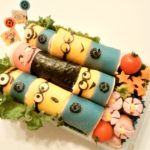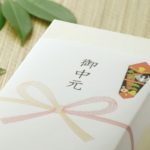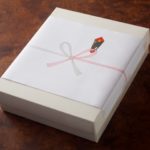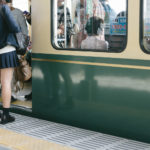-

-
9 Beautifully "Japanized” Starbucks in Japan
Have you ever seen such "Japanized" Starbucks? Today you can find Starbucks all around the world- from North America to Europe, Latin America to far East Asia. In Japan, there are 1,342 Starbucks across the country, and Japanese people do love going there to have fancy drinks. Most Starbucks in Japan have familiar appearances to what you see in your country, but there are fabulous looking Starbucks that exists only in Japan. Let’s see what they look like! If there are unique Starbucks in your country, please share it with us! twitter 1. Nineizaka, Kyoto すごーく久しぶり京都旅行にいってきました! 私の目的はスタバとご朱印w それで初日に行きたかった京都二寧坂ヤサカ店に無事にいけました! 最初全然気づかなくて周りの人が話してるので気づいたというwww 京都限定のスタバカードもゲットできてよかった(*´ω`*) ...
-

-
13 Ways How Japanese Classroom is Different from America
2018/06/21 school uniform, school, japanese culture, seifuku
Differences between Japanese classrooms and American classrooms Education systems show characteristics of culture, value, and society of the country. Since Japan and America have different perspectives on those aspects, classrooms in those two are different. Today we will explain 13 differences between Japanese schools and American schools. 1. School Uniform As often seen in anime and manga, Japanese students, often at middle schools and high schools, are required to wear school uniform or seifuku in Japanese. The traditional style of the uniform is sailor uniform for girls and gakuran uniform for boys. However, more and more schools have brazer uniforms ...
-

-
1970's Sukeban Subculture: Japanese Delinquent Gangs
2018/05/14 school uniform, seifuku, sukeban
Sukeban: Japanese Delinquent Girls in the 1970s Sukeban are Japanese female gangs characterized by altered school uniforms with long skirts and rolled-up sleeves, that are a continuous movement of reveling schools. Let’s find out their subculture and fashion. What is Sukeban? Sukeban (スケバン) refer to delinquent Japanese girl gangs or the boss girl in a gang. The word “Sukeban” is said to come from “suke,” meaning “girl,” and “ban,” a short form of “bancho,” or a gang boss. Sukeban first appeared in the 1960s, as a female equivalent to the male bancho gangs or a girlfriend of male bancho. Initially, ...
-

-
How to Make Minions Cute Kyaraben! Video and Recipe
2018/04/26 japanese food, japanese culture, bento, kyaraben
Kyaraben (Charaben) - A New Version of Bento Lunch Box Many of you are familiar with the Japanese Bento culture, which is a boxed lunch prepared at home and taken to school or workplace. Bento is known for its colorful, appetizing appearance and nutritional value. Now, a new genre of Bento, Kyaraben is catching attention not only from Japanese people but also people from around the world. Let’s get into the Japanese Kyaraben today! Cute Minions and Gru Kyaraben. You can watch how to make cute Minions and Gru Kyaraben in this video! What is Kyaraben/Charaben? Kyaraben, or Charaben, is ...
-

-
Ochugen: Japanese Sumer Gift-Giving Tradition
2018/04/26 omiyage, japanese culture, ochugen
Ochugen: Summertime Gift-Giving Tradition in Japan Ochugen is one of the two gift-giving seasons in Japan along with Oseibo. People exchange/send gifts to superiors at the workplace and to those who are in close relationships to express gratitude. Ochugen is a similar custom to Oseibo that takes place in the year-end, but there are also differences between those two. Let’s dig into the Ochugen tradition! The meaning and origin of Ochugen Chugen (中元), or Ochugen (お中元), is a summer gift-giving tradition that people present gifts to your boss and to those who are in close relationships including relatives, home doctors, ...
-

-
Oseibo: Japanese Year-End Gift Giving Culture
2018/04/25 omiyage, japanese culture, gift
Oseibo: Japanese Year-End Gift Giving Culture Japan is known to have a unique gift-giving culture, as represented in omiyage. Giving gifts in Japan is considered to be a way to show the giver's care for the receivers, to express gratitude, and to maintain relationships. Oseibo is one part of the Japanese gift-giving culture that takes place in the year-end. Let's get into the detail of this culture today! Meaning and Origin of Oseibo The word “Seibo”(歳暮) means “the end of the year.” “O” is an adding letter to make the word formal or to sound gentle. Oseibo is one of ...
-

-
Kogal Fashion Style: Japanese Youth Subculture
2018/04/19 school uniform, fashion, japanese culture
Kogal Fashion: a type of Japanese Youth Fashion Kogal is often referred as a part of Japanese subcultures that emerged in the 1990s. Kogal are schoolgirls (generally high school girls) who dress themselves differently and use distinctive slangs. They spread youth cultures and trends, too. Today, Kogal is getting attention from around the world as a distinctive aspect of Japanese culture. Let’s find out Kogal’s fashion and their culture. What is Kogal? Kogal are Japanese schoolgirls featured by distinctive fashion and culture. The word “Kogal” is derived from Gal or Gyaru, which indicated people who wore cutting-edge fashion and hung ...
-

-
Nanchatte Seifuku: How to Look Like Japanese School Girls!
2018/03/27 school uniform, japanese culture, seifuku
“Nanchatte Seifuku” - Unique Aspect of Japanese School Uniform Japanese students are known to wear school uniforms. While some schools require students to wear a set of uniform designated by the school, other schools have skirts/pants and a school pin only. Several schools even don’t have their school uniforms. Still, school uniform is a symbol of school age to many Japanese schoolers, especially to high school girls. So, even if their schools don’t have school uniforms, they buy fake uniforms to enjoy their school age. Today, let’s have a look at this culture of fake uniform, known as “Nanchatte Seifuku.” ...
-

-
Important Japanese Table Manners You Should Know
2018/03/25 japanese culture, table manners, dining out
Basic Japanese Table Manners You Should Know Whenever you have dining experiences in other countries, it is always good to know their table manners so that you don’t look foolish or you don’t annoy people in the country. Japan shares some common table manners and etiquette with other countries such as not putting your elbows on the table, but many of them are unique to Japan, sometimes what is considered to be rude in your country is correct table manners in Japan and vice versa. But don’t be too nervous. Japanese people understand you are not familiar with Japanese manners ...
-

-
How to Tell Differences between Maki Roll and Hand Roll
2018/03/21 sushi, japanese food
How are Maki Roll and Hand Roll Different? Maki roll and hand rolls are the terms that are categorized in the most well-known Japanese food, sushi. Sushi is a type of food that is comprised of vinegary rice and ingredients like raw/cooked fish, pickled vegetables, and egg, and both maki roll and hand roll have those components. Although these two are a kind of roll, they are often referred as different types of rolls, which makes many people confused. Today, we will explain the differences between maki roll and hand roll with definitions of these two and comparisons of several ...